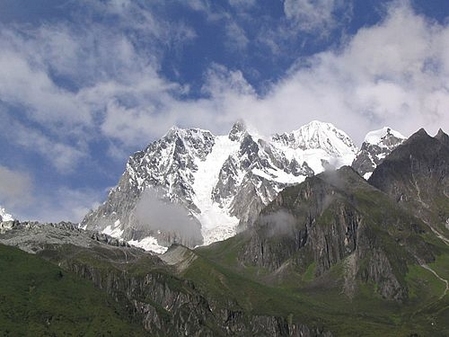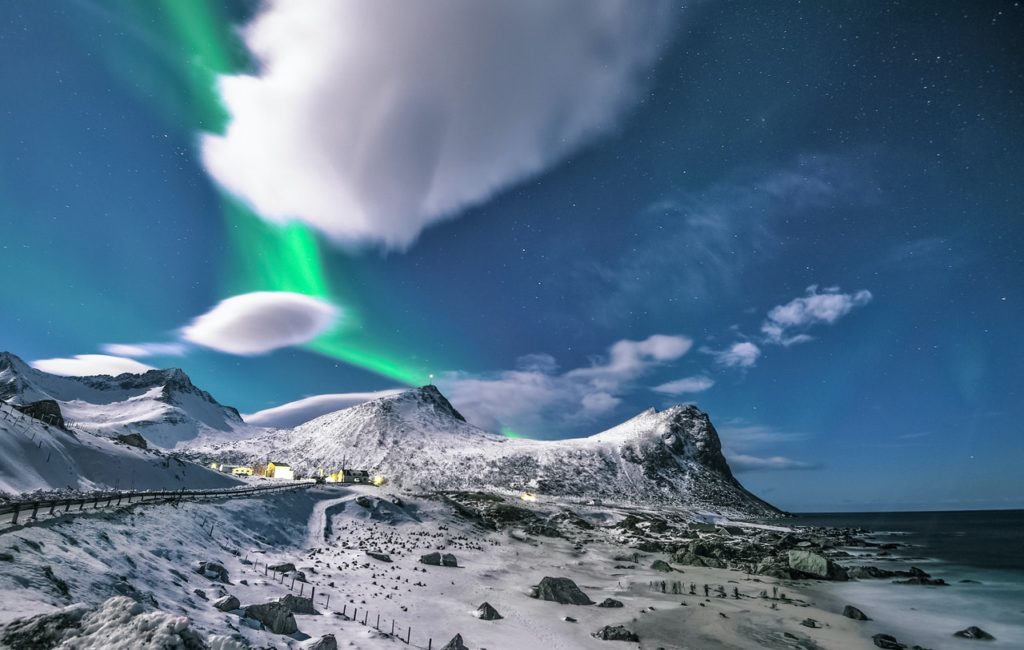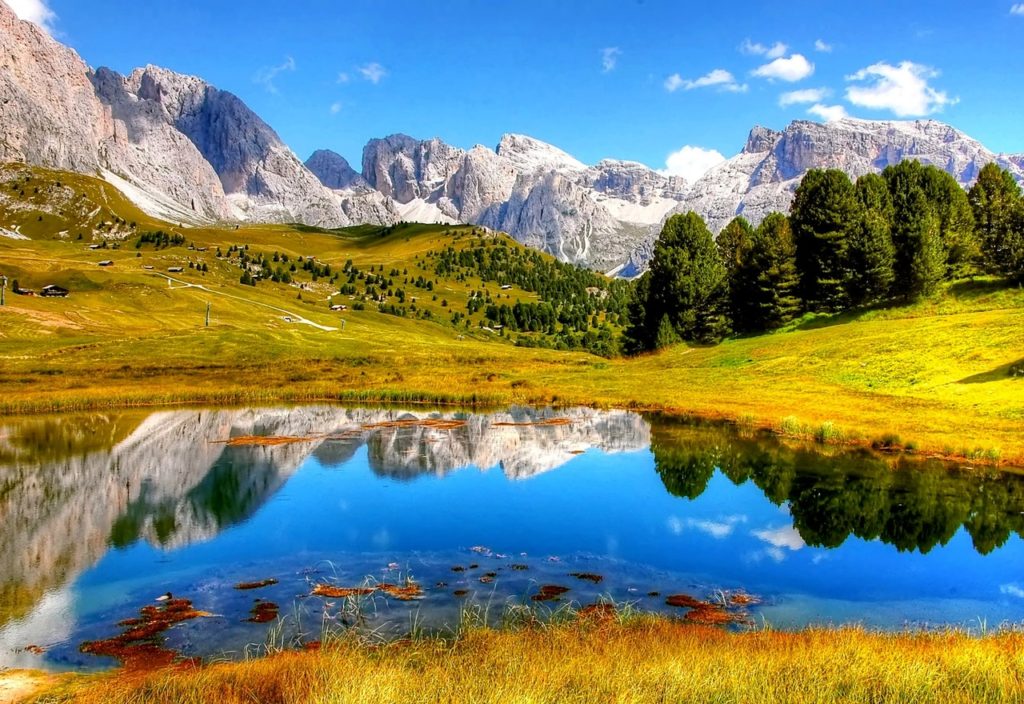Table of Contents
Exposure without Light Meter: “f/16 on a Sunny Day” Rule
The light meter built into the camera for metering through the lens (TTL: through-the-lens) makes our photography work a lot easier. In fact, we rely heavily on this light meter. Without it, when various things appear in front of our camera, we will feel a little disoriented or confused. I know that there are some photographers who can estimate the correct exposure parameters more accurately based on experience. They are also proud of their ability, but this is often not the case.
However, in one case, the correct exposure parameter is a constant constant, that is when you are shooting under bright sunlight.
In order to get the correct exposure value in this case, you should follow some rules that we call the “Sunny f/16” rule: under bright sunlight (no clouds at high altitude, no mist, no air pollution), Probably from a few hours after sunrise until a few hours before sunset, the correct exposure value for frontally illuminated subjects is approximately close to using the reciprocal of the ISO value of the sensitivity as the shutter speed. At the same time, set the aperture to the exposure at f/16, or any other equivalent exposure parameters.
Applicable Conditions of the “Sunny f/16” Rule
“Sunny f/16” is only suitable for bright, direct sunlight, not for early morning or dawn sunlight, nor for mist or cloudy light.
And this rule is not suitable for use in the deep winter in the north, because the sun is very close to the horizon and the light is very low. “F/16 on a sunny day” is also not suitable for macro shooting, because many lenses change the size of their effective aperture when focusing at close range.
In theory, the aperture f-number is only accurate at infinity. Under the same aperture, when the focus is moved closer, the light entering the lens at the focus will also decrease. But usually don’t worry about this problem, because your TTL meter has already calculated this change.
However, the “f/16 on a sunny day” rule is the exposure value when the light meter is not used, so when these conditions change, this rule will not work. And this rule is only suitable for subjects with frontal illumination (the sun shines directly on the subject from a height above your shoulder).
Therefore, at noon in the summer, when the sun is directly coming down from the top of your head, only when you want to shoot your feet from the top down, you can apply the “sunny f/16” rule. If you want to shoot as usual at this time, then you need to modify the parameters of the “Sunny f/16” rule to adapt to the exposure needs of the side light.
Shooting Tones Applicable to the “Sunny f/16” Rule
This rule is only valid for subjects with an average tone. Objects that are too bright or too dark can cause problems. In fact, the tones of most subjects are very uniform, in the words of the photographer, they are “middletoned”.
I personally don’t like the term “middle” very much. Because when we talk about tones, too many photographers use the term “middletone gray”, but we are not talking about black and white photography. So I use the word “medium” instead. In this way, you can say “medium green”, “medium red”, “medium blue” and so on.
Don’t forget that when using the “sunny f/16” rule, you don’t have to use the ISO value as the shutter speed and f/16, but you can also use other equivalent exposure parameters for exposure.
Moreover, the location of use is not mentioned in this law. I was once asked if the “Sunny f/16” rule can be used at the top of the mountain. The answer is yes, because the sun is 93,000,000 miles away from us. I don’t think that when we get closer to the sun at 10,000 and 12,000 feet, it will have much impact on the “F/16” rule.
Equivalent Value of “Sunny f/16” Rule
Now let us suppose that the sensitivity is set to ISO 100, using the “sunny f/16” rule, the exposure parameters under normal conditions are 1/125 sec and f/16 or other equivalent values.
In bright sunlight, there is no need to use only 1/125 sec and f/16. You can also use 1/250 sec f/11, 1/500 sec f/8, 1/1000 sec f/5.6 or 1/2000 sec. f/4. With a slow shutter speed, you can use 1/60 sec f/22 or 1/30 sec f/32 for shooting.
These exposure parameters can allow the same amount of light to reach the image sensor. If you use the ISO400 sensitivity, you have to start from 1/400 sec f/16, if you use the ISO 25 sensitivity, it will be 1/25 sec f16… and so on.
The same exposure means that the same amount of light hits the image sensor. Therefore, different exposure parameters can be used to achieve the same exposure according to the needs of the shooting environment.
Do you need to use a high-speed shutter to capture momentary action? Or need a small aperture to achieve a larger depth of field? If you are shooting a running deer with ISO 50 sensitivity, would you still use the 1/50 second f/16 parameter?
Before you say “no” without thinking, please think carefully. Is there really only one exposure combination correct in that situation? Don’t you like to use blurred pictures to reflect the feeling of movement? In any case, the correct combination of aperture and shutter depends on what kind of photo you want to take. Whether the exposure is correct is entirely up to you.
How to Match Lens and Shutter Speed
In most cases, when you are shooting wild animals, you will use your longest lens, and more often, you will adjust the appropriate shutter speed to capture the momentary picture.
But starting from f/16, it is very time-consuming to calculate how many stops the aperture should be opened to match the shutter speed, but there is a simpler method.
It is equivalent to the “clear f/16” rule, and you can use what I call the “fast f/5.6” rule to achieve the same exposure as the “clear f/16”. Put a zero after the ISO value you use as the shutter speed, and use f/5.6 for the aperture. For example, using ISO100 sensitivity, “Sunny f/16” uses 1/125 sec f16, and “Fast f/5.6” uses 1/1000 sec f/5.6.
Are they the same? Through conversion, you will find that they have the same exposure. When shooting animals, this method is very convenient, because you can count a lot less, and usually the aperture you use at this time is around f/5.6.
By the way, I don’t know if you remember, this estimated exposure value is for the subject under frontal illumination.
For side-lit objects, the exposure value should be set one stop higher than the basic exposure value. For objects with back light (backlight), you should open up two stops. For objects with very light colors in the entire picture composition, you should reduce it by one stop. For very dark colors, you should open the big one. Keep in mind, however, that these estimated exposure values are only used without a light meter, they are not applicable when using a TTL light meter.
Insufficiency of the “Sunny f/16” Rule
There is also a problem when using the “sunny f/16” rule, that is, you need to know how to set the aperture of the lens to f/16.
This seems to be a very simple question, but it is not easy for some lenses. Many zoom lenses today use a design called “variable aperture.” When the lens zooms, the actual aperture size also changes.
These lenses mark their maximum aperture with two f-numbers, such as Nikon 28-105mm f/3.5-4.5 or Canon 35-350mm f/3.5-5.6. If you want to achieve a constant aperture, when the focal length of the lens changes, the aperture must be changed accordingly. If the aperture remains the same physical size, then when the lens zooms, the aperture f-number will change.
For most variable aperture lenses, the aperture value marked on the lens is only correct at the short focal end. For old-fashioned cameras, either use only the short focal end of the lens and use the “f/16” rule, or guess the appropriate aperture value as the lens zooms.
The reason I call some cameras “old-fashioned” is because many new models of cameras can set the aperture value electronically, or have this optional feature. All Canon lenses work in this way. Some Nikon lenses can be set mechanically via the aperture ring on the lens, or set electronically using the command dial on the camera body.
When using electronic settings, the aperture value you set is the actual aperture size, except for the maximum and minimum apertures at the telephoto end.
Example
Let us illustrate the phenomenon described above using a Nikon 28-105mm lens. When the aperture is opened to the maximum, the focal length of the lens is zoomed from 28mm to 105mm, and the aperture size will also change from f/3.5 to f/4.5. There is a 2/3 stop change, which will also happen at the minimum aperture.
At the 28mm end, the minimum aperture is f/22. At the 105mm end, it is f/29. If you use an electronic method to set the aperture value between f/4.5 and f/22, the aperture will remain constant when the focal length of the lens changes.
Based on the above facts, if you use the “f/16” rule when using electronic cameras and zoom lenses, you should avoid using the maximum or minimum aperture. As long as we apply the middle aperture value , it will not have any effect on the application of the “Sunny f/16” rule.
By the way, if you never knew about the estimated exposure and the “f/16” rule before, then you really missed a very useful tool.
(To Be Continued)